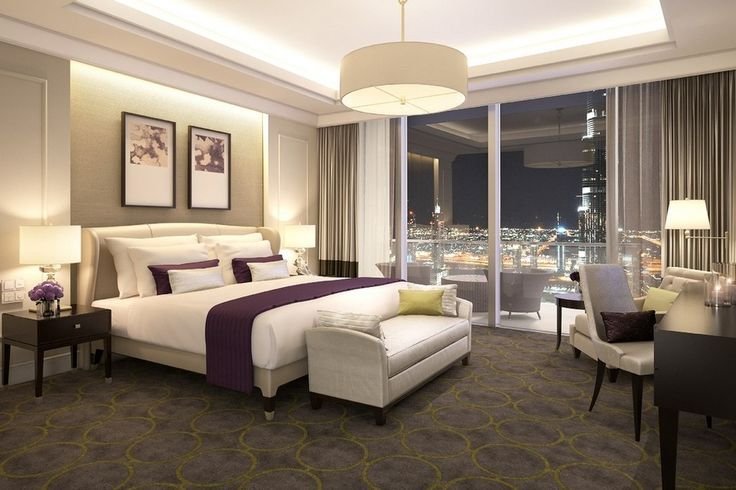In today’s highly competitive hospitality industry, simply offering rooms is no longer enough. Hotel owners and managers need to adopt strategic approaches that increase occupancy while enhancing revenue. Understanding how to increase hotel occupancy rate is crucial for your hotel’s long-term success.
As a revenue management specialist with years of experience, I’ve witnessed how thoughtful strategies can dramatically transform a hotel’s performance. Hotels often grapple with balancing pricing, marketing, and guest experience, yet the right methods can not only fill more rooms but also drive higher profits.
Here are seven powerful strategies that can help you raise your hotel occupancy rate by half and implement effective hotel room sales strategies to ensure sustainable growth.
Understanding the Importance of Occupancy Rates
Why Occupancy Rates Matter
Occupancy rate is a vital metric that reflects how effectively your hotel fills its rooms. A higher occupancy rate generally translates into increased revenue, provided each room generates maximum value. Hotels that fail to optimise occupancy risk leaving potential revenue on the table.
Current Trends Shaping Guest Behaviour
Travel patterns are constantly evolving. Post-pandemic, many guests now seek unique and personalised experiences rather than generic stays. Boutique packages, themed experiences, and customised guest services can appeal to these preferences, helping hotels differentiate themselves from competitors.
The Role of Seasonality
Seasonal patterns can drastically affect hotel occupancy. Beach resorts, for example, typically experience peaks during summer months, while mountain lodges thrive in winter. Advanced forecasting and promotional strategies during off-peak periods can help mitigate seasonal fluctuations, ensuring a steadier flow of bookings year-round.
Understanding the Competitive Landscape
Hospitality is a fiercely competitive industry. Hotels must stand out through unique offerings, personalised services, and competitive pricing. Regular competitor analysis allows you to identify gaps and opportunities, ensuring your hotel remains the preferred choice for travellers.
Strategy 1: Implement Dynamic Pricing to Maximise Revenue
What is Dynamic Pricing?
Dynamic pricing involves adjusting room rates in real-time based on factors like demand, season, and local events. This approach allows hotels to capitalise on high-demand periods while attracting guests during quieter times with targeted discounts.
How to Apply Dynamic Pricing Effectively
A reliable Revenue Management System (RMS) is key to executing dynamic pricing successfully. An RMS analyses both market and internal data to recommend optimal room rates, helping you capture every revenue opportunity. For instance, if a major conference is scheduled in your city, increasing rates temporarily ensures maximum returns without losing potential bookings.
Adjusting Rates Across Channels
Direct bookings through your hotel’s website should offer the best rates to encourage guests to bypass commission-based third-party platforms. Consider pricing strategies that account for booking channel costs while maintaining competitive positioning.
Strategy 2: Leverage Data Analytics for Smart Decisions
Harnessing the Power of Data
Data analytics is no longer optional; it’s essential for effective hotel revenue management. By tracking guest behaviour, booking trends, and preferences, hotels can make informed decisions to enhance occupancy and revenue.
Guest Segmentation
Segmenting guests based on demographics, travel purpose, and booking behaviour allows hotels to create tailored packages and targeted promotions. For example, business travellers may value flexible check-in times and meeting facilities, while families may prioritise spacious rooms and entertainment options.
Predictive Analytics
Using historical data to predict future booking trends enables proactive decision-making. Hotels can adjust pricing, allocate rooms, and schedule promotions to align with expected demand, ensuring higher occupancy and maximised revenue.
Strategy 3: Enhance Your Online Presence Through SEO
Why SEO Matters
Most travellers begin their search online. Ensuring your hotel ranks highly on search engines is critical for visibility and bookings. Effective SEO strategies help hotels capture organic traffic and convert visitors into guests.
Keyword Research and Content
Identify keywords your target audience searches for, such as “how to increase hotel occupancy rate” or “luxury stays in [city]”. Create high-quality content that showcases your hotel’s unique offerings, local attractions, and insider travel tips.
Local SEO and Reviews
Local SEO is especially important for Australian hotels. Ensure your hotel is listed accurately on Google My Business and encourage positive guest reviews. Guest testimonials can significantly influence booking decisions, establishing credibility and trust.
Strategy 4: Build Partnerships for Attractive Packages
Benefits of Local Collaborations
Partnering with local businesses allows hotels to create compelling package deals. Collaborations with spas, restaurants, or tourist attractions can enhance the guest experience and increase bookings.
Designing Winning Packages
Package deals should be enticing and convenient. A weekend getaway package, for instance, could include accommodation, a spa treatment, and tickets to a local attraction, offering guests a complete experience.
Promoting Packages
Promote these packages via your website, email newsletters, and social media. Highlight the unique value and experiences guests will enjoy, making your hotel a top choice for travellers seeking memorable stays.
Strategy 5: Utilise Social Media for Targeted Marketing
Engaging Your Audience
Social media is a powerful tool for reaching potential guests and showcasing your hotel’s personality. Sharing high-quality photos, guest testimonials, and behind-the-scenes content fosters engagement and builds trust.
Targeted Advertising Campaigns
Social media platforms allow highly specific targeting based on demographics, interests, and location. Run campaigns tailored to families, couples, or business travellers, promoting packages that appeal directly to each segment.
Strategy 6: Invest in Staff Training for Exceptional Guest Experience
Why Guest Experience Matters
A memorable guest experience drives repeat bookings and positive word-of-mouth referrals. Well-trained staff are at the heart of providing these experiences.
Training and Empowerment
Regular customer service training ensures staff are equipped to handle diverse situations effectively. Empowering employees to make decisions, such as offering complimentary upgrades, creates personal and memorable stays for guests.
Strategy 7: Implement Loyalty Programs
Encouraging Repeat Visits
Loyalty programs incentivise guests to return, increasing occupancy and fostering long-term relationships.
Designing an Effective Program
Create a points-based system where guests earn rewards for stays that can be redeemed for discounts, free nights, or exclusive benefits. Make the program simple, transparent, and appealing.
Additional Hotel Room Sales Strategies
Incorporating hotel room sales strategies alongside the seven key approaches above strengthens your overall plan. Strategies like upselling premium rooms, offering last-minute deals, and creating bundled experiences can directly enhance occupancy while increasing revenue per guest.
Conclusion
Maximising hotel revenue and occupancy requires a strategic, multifaceted approach. By implementing dynamic pricing, leveraging data analytics, optimising online presence, forming partnerships, engaging on social media, training staff, and rolling out loyalty programs, you can boost occupancy rates significantly.
Hotels that combine these strategies with innovative hotel room sales strategies will thrive in Australia’s competitive hospitality landscape.
FAQs
-
What is the average hotel occupancy rate in Australia?
Occupancy rates vary by location and season, with average rates ranging from 60% to 75%. Hotels employing strategic revenue management can exceed 80% during peak periods. -
How does dynamic pricing impact hotel occupancy?
Dynamic pricing allows rates to adjust according to demand, events, and competition, maximising revenue while attracting guests during slower periods. -
Why is guest segmentation important?
Segmentation enables hotels to tailor offerings and marketing to specific groups, improving relevance and increasing bookings. -
How can local partnerships increase bookings?
Collaborating with nearby businesses creates unique packages, providing guests with added value and enhancing the overall experience. -
What are the benefits of implementing a loyalty program?
Loyalty programs encourage repeat stays, strengthen brand loyalty, and provide a steady stream of revenue.




Leave a Reply